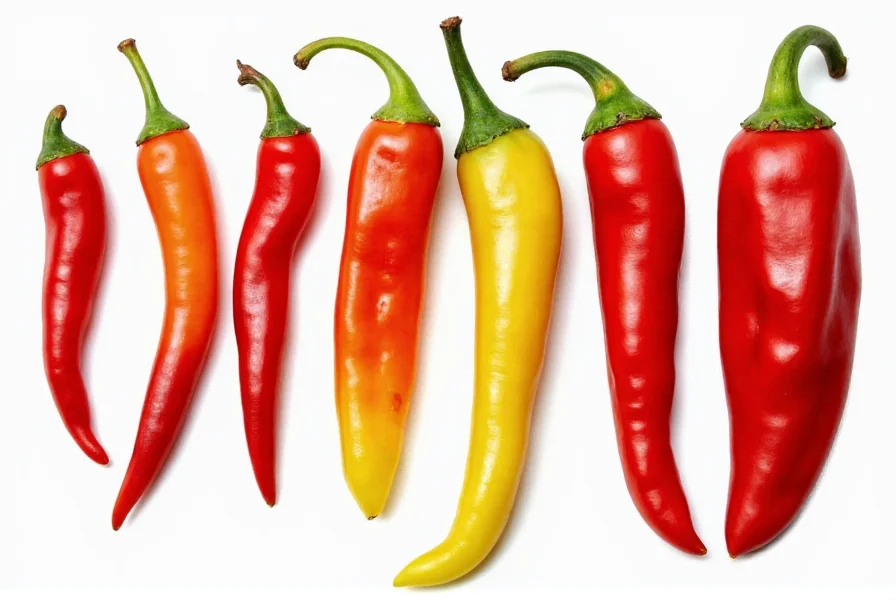When your recipe calls for serrano peppers but you can't find them or need a different heat level, knowing the right substitute makes all the difference. Serrano peppers (10,000–23,000 Scoville units) offer a bright, grassy flavor with moderate heat that's essential in many Mexican and Southwestern dishes. Whether you're looking for a milder alternative to serrano pepper for sensitive palates or a hotter option for spice enthusiasts, understanding the flavor profiles and heat levels of potential substitutes ensures your dishes maintain their intended character.
Key Factors in Choosing Serrano Pepper Substitutes
Selecting the perfect serrano pepper alternative requires considering three critical elements: heat level (measured in Scoville Heat Units), flavor profile, and texture. Serranos deliver a clean, vegetal heat that builds gradually—different from the fruitier habanero or earthier cayenne. The best substitutes maintain similar culinary properties while adjusting for your specific heat requirements.
Top Serrano Pepper Alternatives Compared
| Pepper Type | Scoville Range | Flavor Profile | Substitution Ratio | Best For |
|---|---|---|---|---|
| Jalapeño | 2,500–8,000 SHU | Grassy, slightly sweet | 1–2:1 | Salsas, nacho toppings, milder dishes |
| Cayenne | 30,000–50,000 SHU | Earthy, slightly smoky | 0.75:1 | Cooking sauces, spice blends, dried applications |
| Thai Chili | 50,000–100,000 SHU | Sharp, citrusy | 0.25–0.5:1 | Asian-inspired dishes, hot sauces |
| Poblano | 1,000–2,000 SHU | Earthy, slightly sweet | 2:1 | Stuffed peppers, mild sauces, roasted applications |
| Habanero | 100,000–350,000 SHU | Fruity, floral | 0.1:1 | Extreme heat applications, tropical salsas |
Jalapeño: The Most Accessible Serrano Pepper Substitute
When searching for a serrano pepper alternative that's widely available in grocery stores, jalapeños provide the closest flavor match with about half the heat. Their similar grassy notes work well in fresh salsas, guacamole, and as toppings. For recipes requiring raw serranos, use one and a half to two jalapeños per serrano pepper called for. Remove seeds and membranes from jalapeños to better match serrano heat levels. This milder alternative to serrano pepper maintains the fresh pepper character while reducing intensity.
Cayenne: The Hotter Dried Alternative
Cayenne peppers offer a different flavor profile but similar heat range to serranos, making them excellent serrano pepper substitutes in cooked dishes. Their earthier, slightly smoky notes work particularly well in sauces, stews, and spice blends. When substituting fresh cayenne for serrano, use three-quarters of a cayenne per serrano. For dried applications, 1 teaspoon cayenne powder equals approximately 2 serrano peppers. This serrano vs cayenne comparison shows cayenne works best when you need consistent heat without the fresh pepper brightness.
Thai Chilies: For Significant Heat Increase
When you need a much hotter serrano pepper alternative, Thai chilies deliver intense heat with a distinctive citrusy note. Use only one-quarter to one-half of a Thai chili per serrano pepper to avoid overwhelming your dish. These work exceptionally well in Southeast Asian fusion recipes where the flavor profile complements rather than competes. The serrano vs Thai chili heat comparison reveals Thai chilies are 5–10 times hotter, so precise measurement is crucial.
Practical Substitution Guidelines
Successful pepper substitution depends on your specific recipe:
- For fresh applications (salsas, salads): Jalapeños provide the closest texture and flavor match as a serrano pepper substitute for cooking raw applications
- For cooked dishes (soups, stews): Cayenne offers more consistent heat distribution
- For extreme heat needs: Thai chilies or habaneros (use sparingly)
- For mild dishes: Poblanos maintain pepper character without significant heat
Always adjust quantities based on your specific peppers' heat—pepper heat varies significantly based on growing conditions. When in doubt, start with less and gradually increase. Remove seeds and membranes to reduce heat in any alternative you choose.

Storage Tips for Alternative Peppers
Maximize freshness of your serrano pepper alternatives by storing them properly. Keep jalapeños and serranos in the refrigerator's crisper drawer in perforated plastic bags for up to three weeks. For longer storage, roast and freeze peppers in airtight containers. Dried alternatives like cayenne powder maintain potency for 6–12 months when stored in cool, dark places. Understanding proper storage extends the usability of your serrano pepper substitutes and maintains flavor integrity.











 浙公网安备
33010002000092号
浙公网安备
33010002000092号 浙B2-20120091-4
浙B2-20120091-4